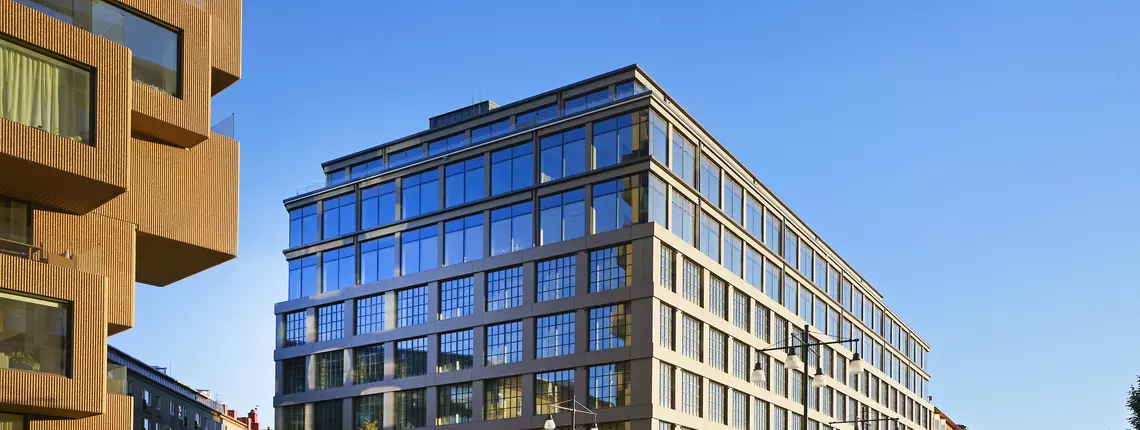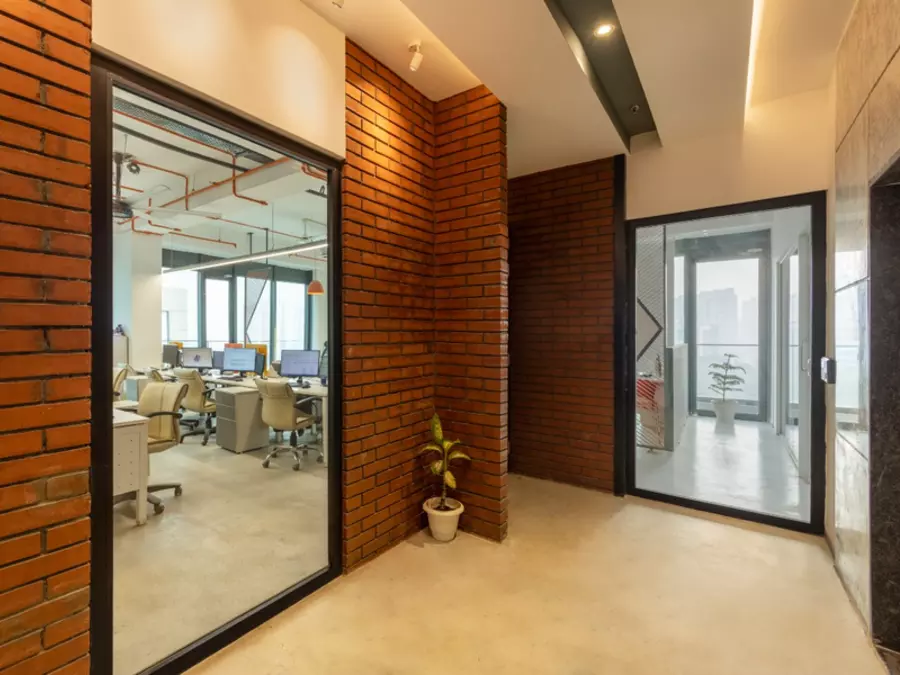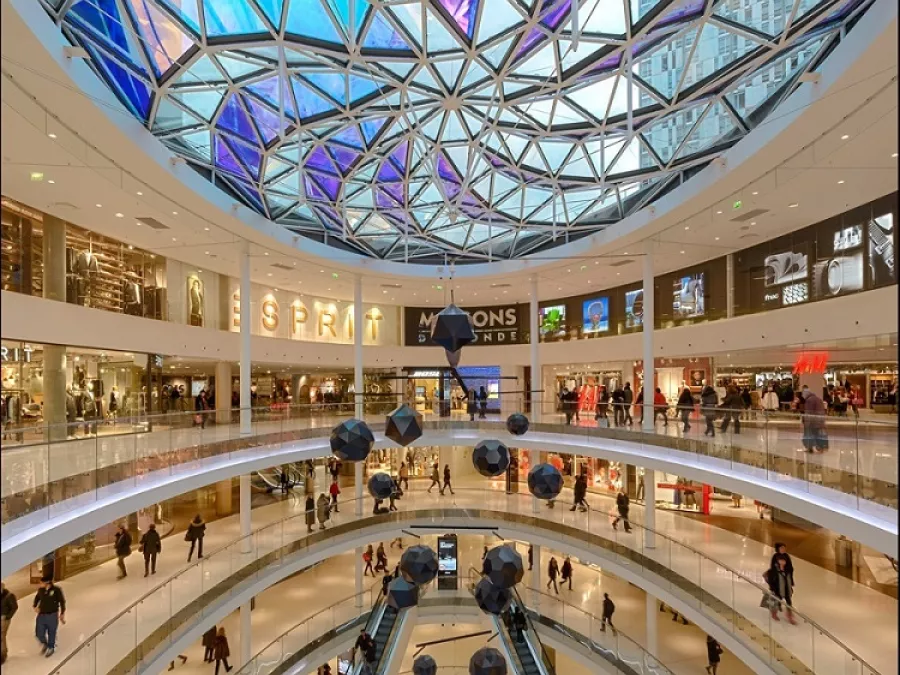Can Buildings Be Good For The Planet? Exploring The Rise Of Green Construction
Explore the role of glass and advanced high-security systems in making green construction both sustainable and secure.

As we face the immediate realities of climate change, the construction industry is stepping up to redefine its role in sustainability. Green construction is not just a trend; it's a transformative movement that challenges us to rethink how buildings impact our planet. By embracing green building principles, we can explore innovative practices and sustainable materials that significantly reduce ecological footprints. In this article, we will look at how buildings can be designed not only to shelter us but also to protect and nurture our environment.
Understanding Green Construction
Green construction, also known as sustainable construction or eco-friendly building, encompasses a range of practices aimed at minimising environmental impact throughout a building's life cycle. This includes everything from site selection and design to construction, operation, maintenance, and eventual demolition. Understanding green construction involves recognising its core principles and practices that prioritise sustainability. As the world grapples with environmental challenges, the construction industry is evolving to embrace methods that reduce ecological footprints and enhance the quality of life for occupants.
Importance of Green Building

Adopting sustainable building practices is crucial for sustainable development for several reasons:
1. Reducing Environmental Impact: The construction industry significantly contributes to global carbon emissions. By implementing sustainable construction methods, we can dramatically lower these emissions and reduce the overall ecological footprint of buildings.
2. Enhancing Energy Efficiency: Green buildings are designed to use less energy, lowering operational costs and decreasing reliance on fossil fuels. This shift is essential for combating climate change and promoting energy independence.
3. Promoting Health and Well-being: sustainable buildings prioritise occupant health through improved indoor air quality, natural lighting, and the use of non-toxic materials. This focus on well-being can lead to increased productivity and comfort for those who inhabit these spaces.
4. Economic Benefits: While the initial investment in green construction may be higher, the long-term savings on energy bills, maintenance costs, and potential tax incentives make it a financially sound choice. Moreover, green buildings often have higher market values and attract environmentally conscious tenants.
5. Regulatory Compliance and Market Demand: As governments increasingly implement regulations favouring sustainable practices, adopting sustainable building methods ensures compliance with these laws. Additionally, there is a growing demand from consumers for environmentally friendly options in both residential and commercial properties.
Key Principles of Green Building
The fundamental principles of green building serve as the foundation for creating environmentally responsible and resource-efficient structures. These principles guide architects, builders, and developers in making informed decisions that minimise environmental impact while maximising energy efficiency and occupant health.
1. Sustainable Design
Sustainable design minimises environmental impact through strategic architectural choices. This includes bioclimatic design, which orients buildings to optimise natural light and ventilation, and the use of natural materials that are locally sourced, recycled, or renewable. Additionally, careful site selection is crucial, as it preserves existing ecosystems and promotes biodiversity.
2. Energy Efficiency
Energy efficiency focuses on reducing energy consumption by incorporating innovative systems and renewable energy sources. Key strategies include enhancing thermal insulation to maintain comfortable indoor temperatures, utilising energy-efficient systems such as advanced HVAC and LED lighting, and integrating renewable energy sources like solar panels or wind turbines to harness clean energy.
3. Water Conservation
Water conservation techniques aim to minimise water usage in buildings. Effective measures include installing low-flow fixtures such as water-efficient faucets and toilets, implementing rainwater harvesting systems for irrigation and non-potable uses, and designing landscapes with native plants that require less irrigation, thereby promoting sustainability.
Sustainable Building Materials
Sustainable building materials play a crucial role in reducing the environmental impact of construction projects. By selecting renewable, recyclable, or responsibly sourced materials, builders can significantly lower carbon emissions and resource depletion. Understanding the characteristics and benefits of these materials is essential for making informed choices that contribute to a greener future.
What Are Sustainable Building Materials and Their Importance
Sustainable building materials are those that have a minimal impact on the environment throughout their life cycle. This includes materials that are renewable, recyclable, and produced with low energy consumption.
The role of these materials in reducing carbon footprints is significant; by opting for sustainable options, builders can lower greenhouse gas emissions associated with production, transportation, and disposal. Choosing sustainable materials not only contributes to environmental protection but also enhances the overall quality and durability of structures.

The Role of Glass in Sustainable Buildings

Glass plays a major role in sustainable construction, emerging as a preferred building material due to its numerous environmental benefits. As a transparent, recyclable, and energy-efficient material, glass enhances the sustainability of buildings by optimising natural light, which reduces reliance on artificial lighting and lowers energy consumption.
Its ability to provide excellent thermal insulation helps maintain comfortable indoor temperatures, further contributing to energy efficiency. Additionally, glass offers aesthetic and functional versatility, allowing architects to create visually appealing designs while meeting practical needs. Glass facades improve indoor air quality by allowing for natural ventilation while minimising noise pollution through double-glazing technologies.
Moreover, fire-rated glass and high-security glass are essential components of sustainable buildings. Fire-rated glass provides safety by containing fire and smoke and meets aesthetic demands without compromising energy efficiency. High-security glass enhances safety while contributing to a building's overall sustainability by reducing the need for additional security measures and materials. Both types of glass align with sustainability goals by ensuring that buildings are safe, functional, and environmentally responsible.
Vetrotech Saint-Gobain is dedicated to providing innovative glass solutions that align with the principles of sustainable construction. With over 40 years of expertise, Vetrotech specialises in multifunctional glass products, including fire-resistant and energy-efficient options that enhance safety while maintaining aesthetic appeal.
These products are designed to minimise environmental impact throughout their life cycle, contributing to resource efficiency and environmental responsibility. Projects such as the Munch Museum in Oslo, and the HiLo NEST in Switzerland exemplify how Vetrotech's glass solutions have been effectively utilised in sustainable architecture.
Future Trends in Green Building

As the construction industry evolves, the focus on sustainability intensifies, driving the development of innovative practices and materials. Future trends in green building reflect a commitment to reducing environmental impact while enhancing energy efficiency and occupant well-being. This shift is characterised by the integration of advanced technologies and sustainable design principles that aim to create environmentally friendly, economically viable, and socially responsible buildings.
1. Technological Innovations
Eco-friendly buildings are advancing through technologies that enhance sustainability. Innovations like cross-laminated timber (CLT) offer renewable alternatives, while smart HVAC systems and low-emissivity (Low-E) glass improve energy efficiency. Smart technologies using the Internet of Things (IoT) allow for real-time energy monitoring, optimising performance and reducing costs.
2. The Growing Demand for Green Buildings
Awareness of climate change is driving a significant shift towards eco-friendly construction. The eco-friendly building market is expected to grow at a 20% annual rate from 2021 to 2026, with consumers increasingly seeking sustainable spaces. Developers are responding by prioritising green practices and integrating sustainable materials into their projects.
The Way to Building a Sustainable Future
As the construction industry evolves, embracing sustainable building practices becomes essential for promoting sustainability and addressing climate change. By prioritising innovative materials, such as Vetrotech's advanced glass solutions, and adopting energy-efficient technologies, builders can create structures that not only enhance occupant comfort but also minimise environmental impact. Despite challenges like initial costs and regulatory hurdles, the growing demand for eco-friendly buildings signals a positive shift towards a more sustainable future.
